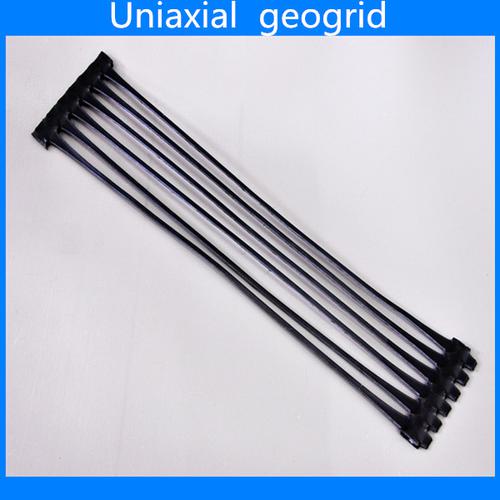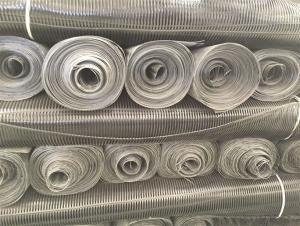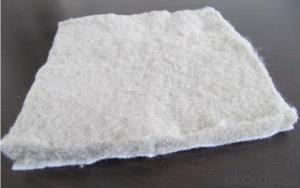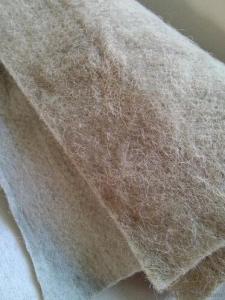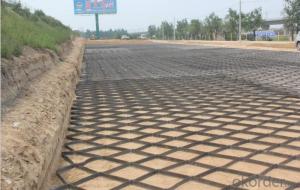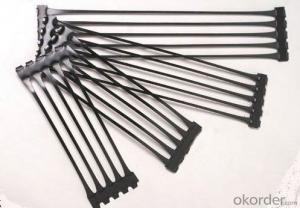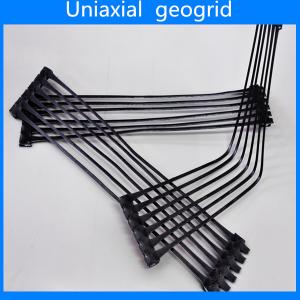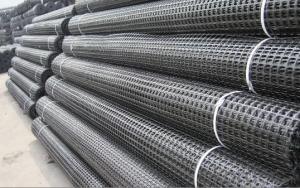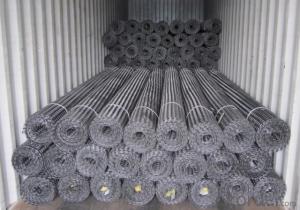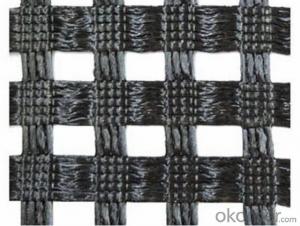Triax PP Uniaxial Geogrids
OKorder Service Pledge
OKorder Financial Service
You Might Also Like
Item:PP Uniaxal geogird
1.Material:PP
2.Tensiel strength:30KN/M
3.Size:2.5m*50M
4. Elongation:10%
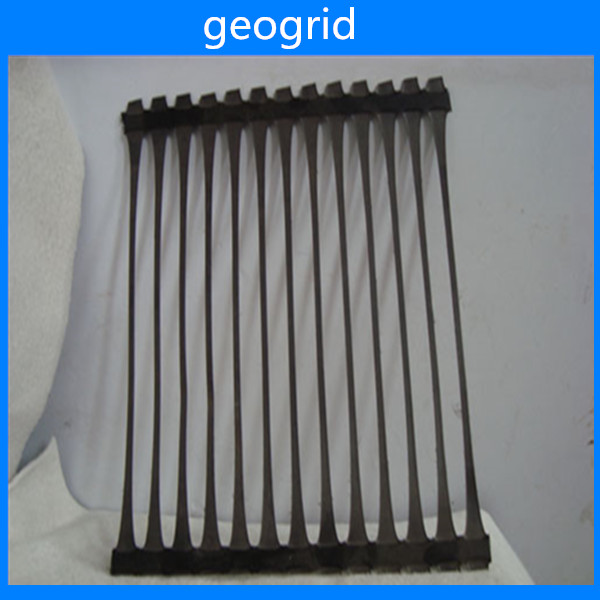
Uniaxial geogrid ,made of high molecular polymer ,is extruded into sheet and then punched into regular mesh patten,and finally stretched in the longitudinal direction.

Feature:
With high tensile strength and tensile modulus
Function:
Uniaxial goegrid is mainly applied in highway,railway,slope protecting projects,retaining wall,dam to strengthen land loading capacity and extend its service life.Features in reducing area,project cost and matentainence cost,convenient to construct.
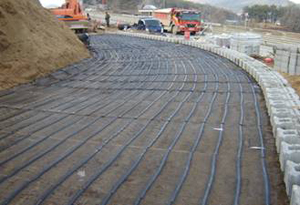
- Q: How to connect two-way geogrid
- Transverse 10cm overlap with plastic tape binding on the grid
- Q: Can geogrids be used in pond liners?
- Yes, geogrids can be used in pond liners. Geogrids are often used as a reinforcement material in the construction of pond liners to enhance their stability, prevent soil erosion, and increase their overall strength and durability.
- Q: 0.3m drainage geogrid
- Of course, there are many other manufacturers
- Q: Which instrument is used to measure the permeability of geotextiles?
- Is made of filament or staple through the equipment and technology of different laying into the mesh, after acupuncture process for different fiber intertwined intertwined fixing fabric specification, make the fabric soft, plump, thick, stiff, to achieve different thickness to meet the requirement of use
- Q: Can geogrids be used in reinforcement of rail embankments and cuttings?
- Yes, geogrids can be used in the reinforcement of rail embankments and cuttings. Geogrids are commonly used in civil engineering projects to enhance the stability and strength of soil structures. By placing geogrids within the embankments or cuttings, they help distribute the load more evenly and reduce the likelihood of slope failures or ground movement. This reinforcement technique improves the overall durability and longevity of rail infrastructure.
- Q: Can geogrids be used in ground stabilization for wastewater treatment plants?
- Yes, geogrids can be used in ground stabilization for wastewater treatment plants. Geogrids are commonly used in civil engineering projects to reinforce soil and provide stability. In the case of wastewater treatment plants, geogrids can be used to reinforce the ground and prevent soil erosion, especially in areas with high water flow or heavy loads. They can improve the stability of the ground and ensure the longevity and effectiveness of the wastewater treatment infrastructure.
- Q: Geogrid prices and geogrid manufacturers?
- 4, geogrid reinforced airport foundation can greatly improve the bearing capacity of the runway, to ensure the safety of aircraft landing5, geogrid can be used for garbage disposal, power plants, ash dam project, coal mine, metallurgy, green, enclosure and other fields6, the construction of soft foundation reinforcement, improve the overall bearing capacity of the foundation
- Q: What is geogrid, what is the role?
- To enhance the problemGlass fiber geogrid features:The product has the characteristics of high strength, low elongation, high temperature resistance, high modulus, light weight, good toughness, corrosion resistance, long service life, can be widely used in the old cement pavement and airport runway maintenance, dams, river, slope protection, bridge pavement engineering field enhancement processing, can give the pavement reinforcement and reinforcement to prevent rutting, fatigue crack of pavement, hot and cold crack and the expansion of reflection crack, and can disperse the bearing capacity of pavement and prolong the service life of the pavement, high tensile strength and low elongation, no long-term creep, high physical and chemical stability, thermal stability, fatigue cracking, rutting resistance, cracking resistance at low temperature delay, reduce reflection crack.
- Q: Are geogrids suitable for use in ground reinforcement for residential developments?
- Yes, geogrids are suitable for use in ground reinforcement for residential developments. Geogrids provide effective soil stabilization and reinforcement, enhancing the stability and load-bearing capacity of the ground. They are durable, cost-effective, and can be easily installed, making them a practical choice for residential projects.
- Q: How many inspection batches of Geogrid
- 1, plastic geogrid: according to the provisions of "geosynthetics plastic geogrid" GB/T17689-2008: the same materials, the same formula and the same under the condition of the technology of production of the same specifications of plastic geogrid as a group, each batch number shall not be more than 500 volumes, 7 volumes of less than 500 days of production period in 7 days for a number of production.
Send your message to us
Triax PP Uniaxial Geogrids
OKorder Service Pledge
OKorder Financial Service
Similar products
Hot products
Hot Searches
Related keywords

